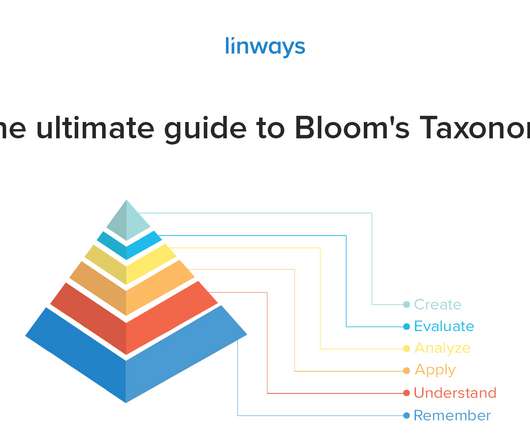The ultimate guide to Bloom’s Taxonomy
Linways Technologies
MARCH 13, 2020
The student. Each of these are mapped with measurable outcomes to assess attainment. The believed that classifying goals like this would be beneficial to assess college student performances better. of Krathwohl’s and former student of Bloom’s. of Krathwohl’s and former student of Bloom’s. information.














Let's personalize your content